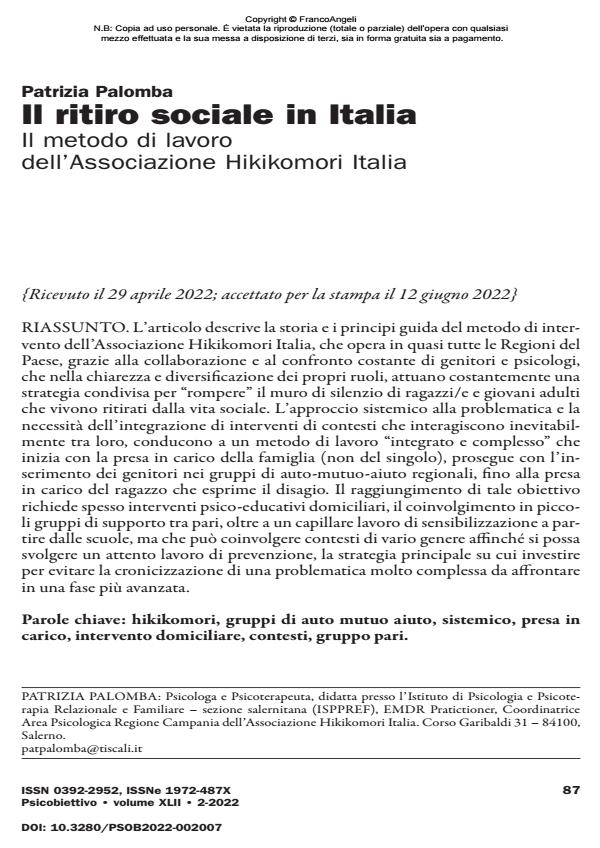Social withdrawal in italy. The working method of the italian hikikomori association
Journal title PSICOBIETTIVO
Author/s Patrizia Palomba
Publishing Year 2022 Issue 2022/2
Language Italian Pages 18 P. 87-104 File size 722 KB
DOI 10.3280/PSOB2022-002007
DOI is like a bar code for intellectual property: to have more infomation
click here
Below, you can see the article first page
If you want to buy this article in PDF format, you can do it, following the instructions to buy download credits

FrancoAngeli is member of Publishers International Linking Association, Inc (PILA), a not-for-profit association which run the CrossRef service enabling links to and from online scholarly content.
The article describes the history and guiding principles of the intervention method of the Italian Hikikomori Association, which operates in almost all the regions of the country. This is made possible thanks to the collaboration and constant exchange between parents and psychologists, who in the clarity and diversification of their roles, constantly implement a shared strategy to "break" the wall of silence of children and young adults who live withdrawn from social life. The systemic approach to the problem and the need to integrate interventions of contexts that inevitably interact with each other, lead to an "integrated and complex" working method that begins with taking charge of the family (not the individual), then continues with the inclusion of parents in regional self-help groups, until the child expresses the discomfort is taken in charge. Achieving this goal often requires psycho-educational interventions at home, involvement in small peer support groups, as well as a capillary awareness raising which can take place in schools but that can involve contexts of various kinds to allow prevention work to be carried out. Prevention remains the main strategy in which to invest and avoid the chronicization of a very complex problem to be addressed at a more advanced stage.
Keywords: hikikomori, self-help groups, systemic, taking charge, home intervention, contexts, peer group
Patrizia Palomba, Il ritiro sociale in Italia. Il metodo di lavoro dell’Associazione Hikikomori Italia in "PSICOBIETTIVO" 2/2022, pp 87-104, DOI: 10.3280/PSOB2022-002007